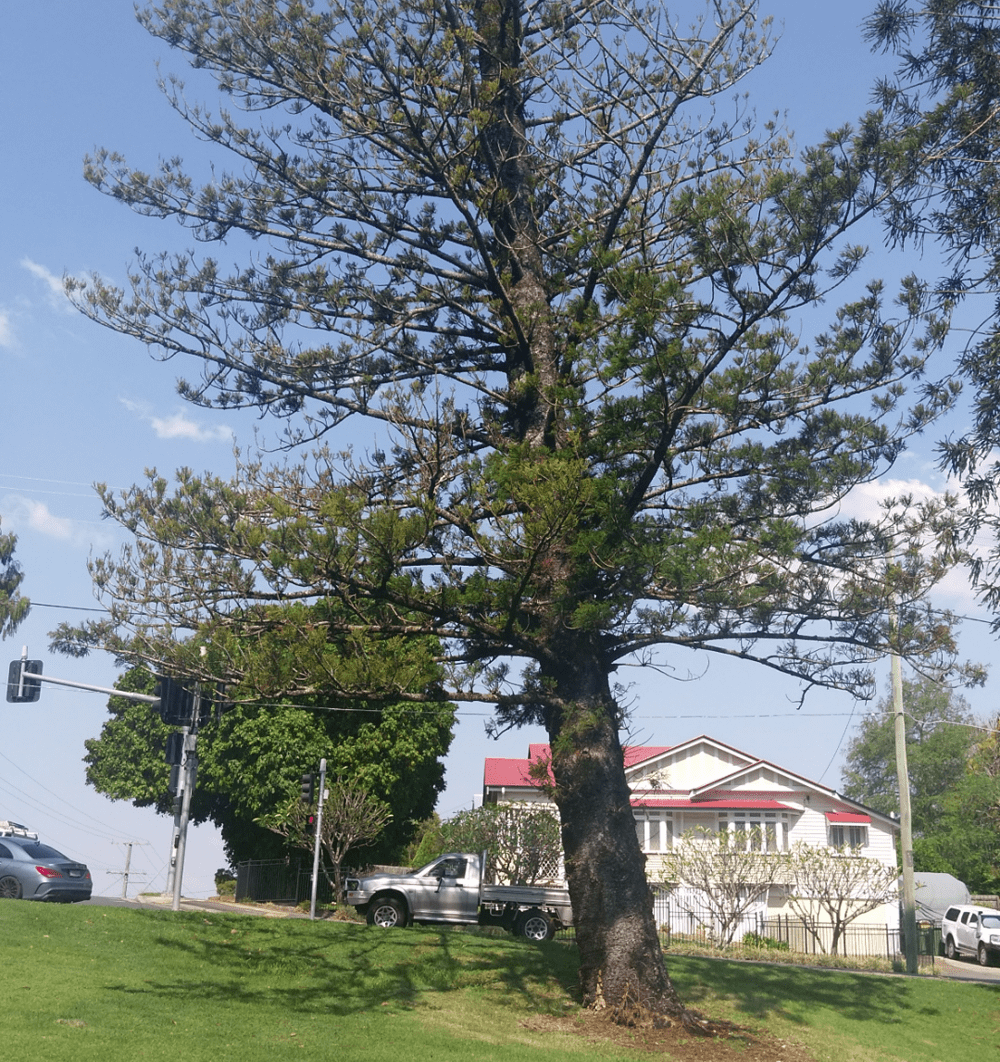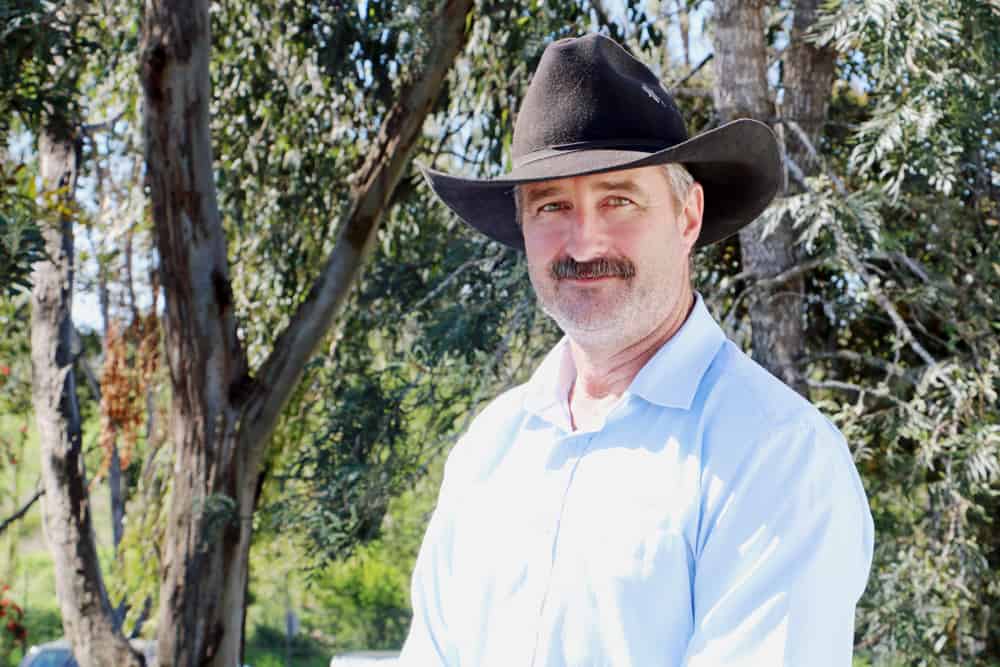
The heritage protected pine (Araucaria cunninnghamii) on the eastern boundary of the park had been on council’s radar for some time, its deteriorating health picked up during fortnightly inspections of the park.
It was removed on 26 October to ensure community safety.
While its removal was unfortunate, it was not done lightly. The decision was made in consultation with the State Department of Environment and Science and only once there was no element of doubt, with the tree having started a downward spiral.
Inspection raises concern
“The arborist team carries out fortnightly inspections in Queens Park, mostly looking for any tree health issues and any potential safety issues with the trees,” Mr Parsons said.
“This tree has had a significant lean for many years; just prior to being taken down its lean was calculated at about 22 degrees to the north east, which is quite substantial.
“The south-westerly winds the tree would have encountered during its life in that location and the fact it was on a slope would have accentuated that lean over time.”
To try and compensate for the precarious angle it found itself on, and in an attempt to defy gravity, the hoop pine had expanded its footprint as an anchor.
“We could see the tree had formed what is called tension wood on the downhill side to try and reinforce itself and compensate for the lean,” he said.
“It takes years and an incredible amount of energy for a tree to do this, and it is always a positive sign to see. The tree identifies its weaknesses and modifies its roots, like laying extra cables in the ground for support.
“Once its energy reserves are depleted, that is when a tree is vulnerable to opportunistic fungal or insect attack, leading to further decline and potential failure.
“The process is very similar to what happens in humans when if we are rundown and do not have appropriate energy reserves we are more likely to get sick.”

The base of the tree, showing resin, a crack and the tree’s work to expand its footprint as an anchor.
Mr Parsons said the most obvious indicator a tree was under stress was if it did not look as it should.
Ipswich City Council arborists are familiar with tree species, their characteristics and growth habits, and how they evolve with age in their later years.
“The first question we usually ask is whether a tree looks how it should for that particular species, age, climatic conditions and topography,” he said.
“We look at things like leaf colour, distribution and density and the overall presence of the tree.
“We could see with this pine that its foliage was not as dense as it should have been, it lacked lustre characteristic of that species, and the overall presentation was one of depression.
“It was also weeping resin, which is a sign of infestation and often a secondary condition from borers. It also had some cracking through its bark.
“When a tree is wounded or invaded it will take a four walls approach to try and contain the infestation of pathogens.
“This is labour intensive on the tree’s behalf, dealing with pathogens spreading upwards, downwards and inwards, but this is the main defence mechanism to combat invasion with ‘walling off’.
“If you can imagine building a barn to contain something, you have a roof, rear wall and sides and then finally doors to seal it in, that is kind of what the tree tries to do by building a compartment to surround the disease.
“That precision process takes a lot of energy and hard work and the tree needs to be in good vigour and plentiful resources to deal with this.”

The tree developed a substantial lean throughout its life.

Ipswich City Council Arborist Neville Parsons.
Working with future generations in mind
Community safety and preservation of the environment are always top priorities for the Ipswich City Council arborist team.
“We will always try to save a tree where we can, and give it every opportunity to come back,” Mr Parsons said.
“Nobody in the team likes to see a tree of this significance come down and the decision for removal is never made lightly or without a thorough inspection.
“Whenever we are looking at a tree, we are always working ahead to try and give a tree the best chance to be here in another 20 to 50 years.
“We are proud custodians for these trees, and in that role we assist them in every way we can, to ensure their safe arrival to the following generations and beyond.”
The hoop pine was near the intersection of Blackstone and Chermside roads, adjacent high and low voltage power lines and in an area frequently used by vehicle and pedestrian traffic.
For these reasons, following an independent arborist report which confirmed the tree’s poor health and months of monitoring where further decline was recorded, it was removed.
A replacement tree of the same species will be planted in the hoop pine’s place, so as to stay consistent with the original park plantings and design.

